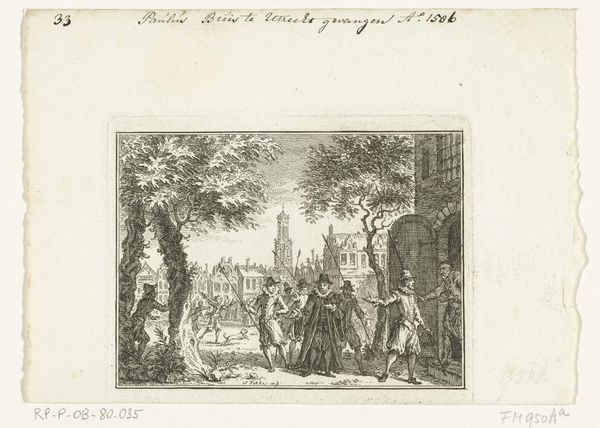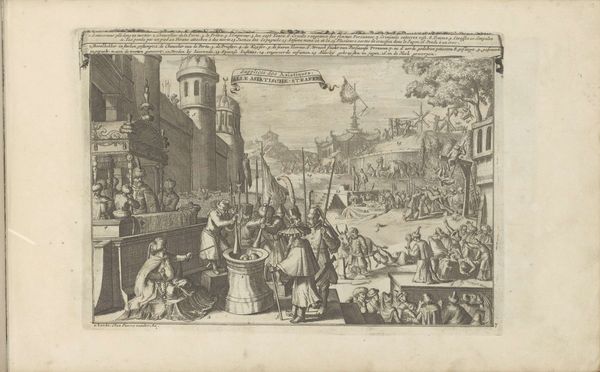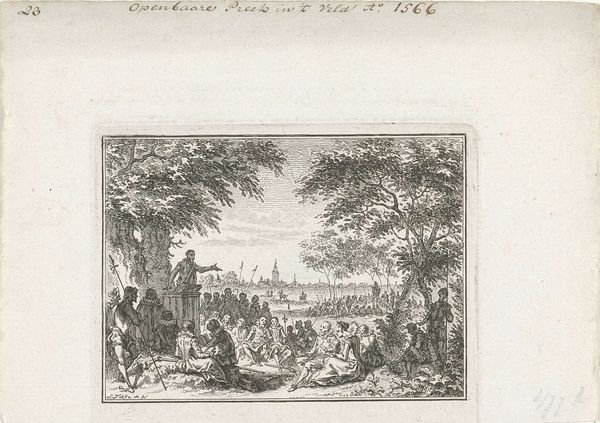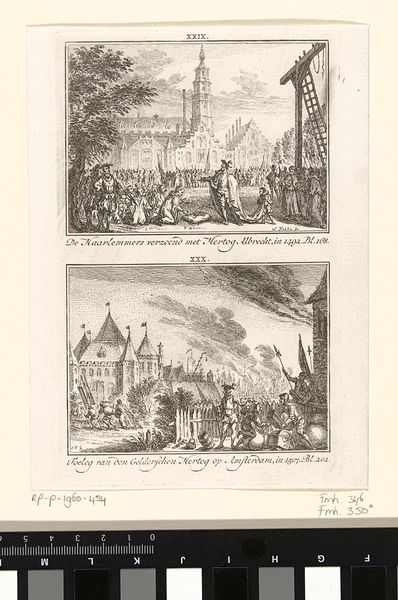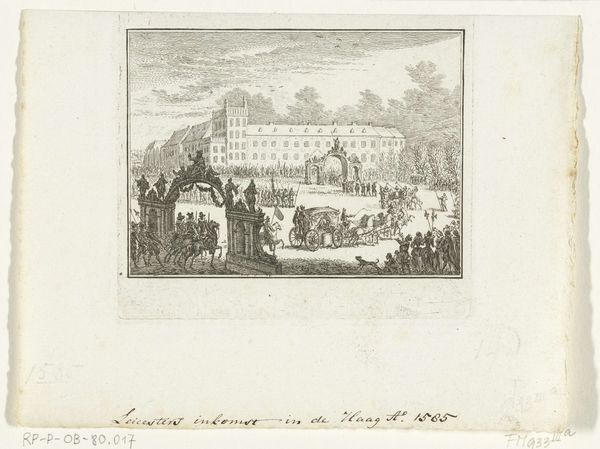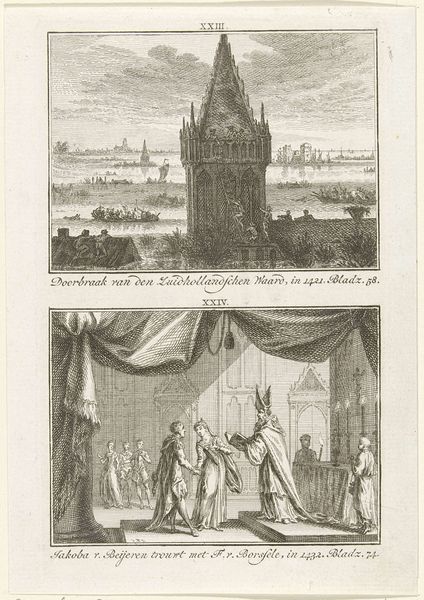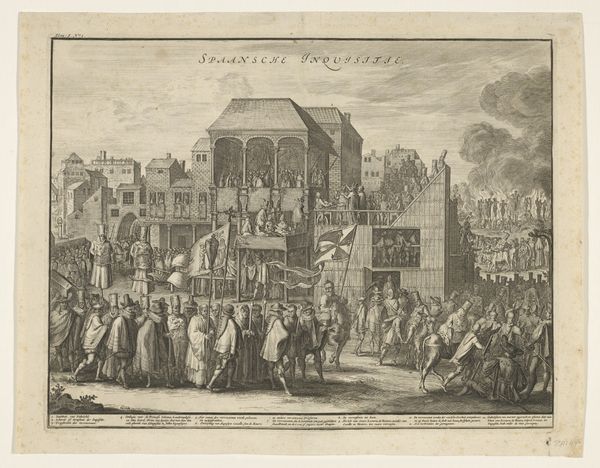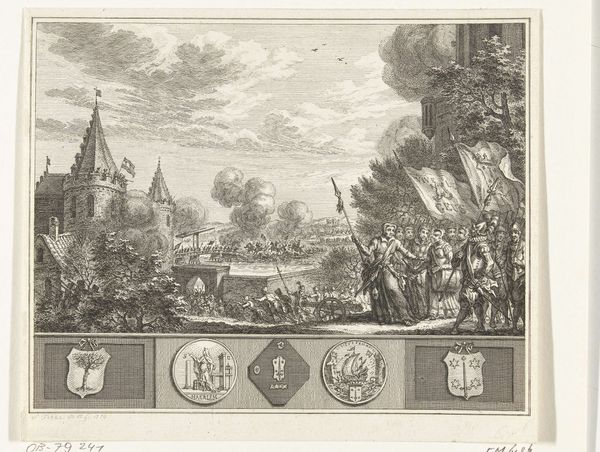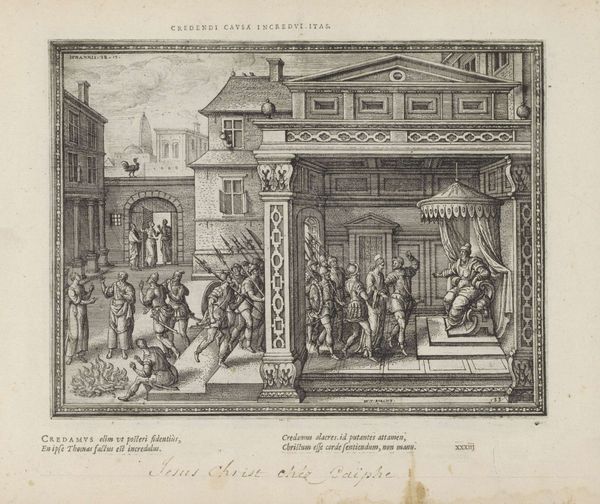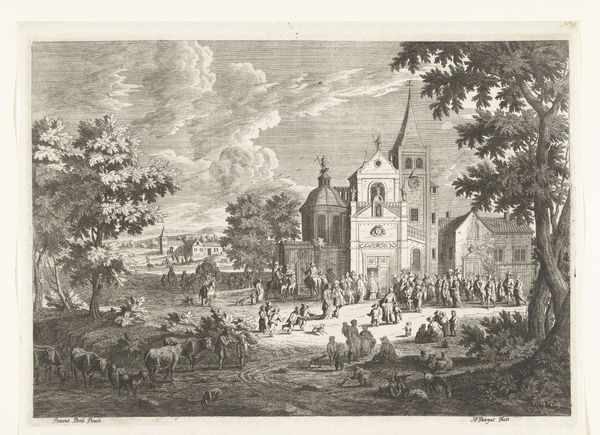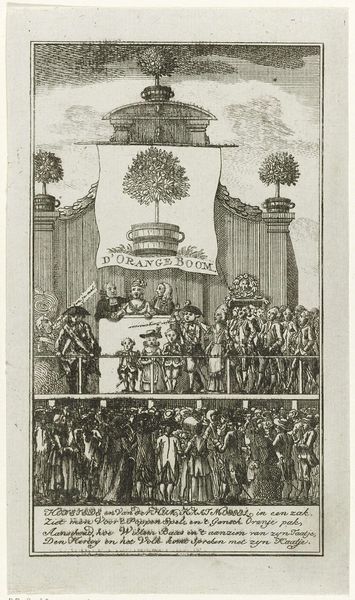
Dimensions: height 85 mm, width 105 mm
Copyright: Rijks Museum: Open Domain
This print, made by Simon Fokke in the 18th century, depicts the Duke of Anjou being sworn in as the lord of Antwerp in 1582. An engraving like this relies on a reductive process. The artist would have used a tool called a burin to cut lines directly into a metal plate, inking the plate, and then running it through a press. The incised lines hold the ink, transferring the image to paper. What you see here is the result of careful labor, a graphic system of hatching, cross-hatching, and stippling to describe form, light, and shadow. Prints like these were essentially reproductive technology. They served as a means of circulating imagery widely. In that sense, they mark an important early phase of mass media, bringing images into the homes of people who would otherwise never have seen them. This print is an example of how craft processes are deeply connected to social and political life.
Comments
No comments
Be the first to comment and join the conversation on the ultimate creative platform.
